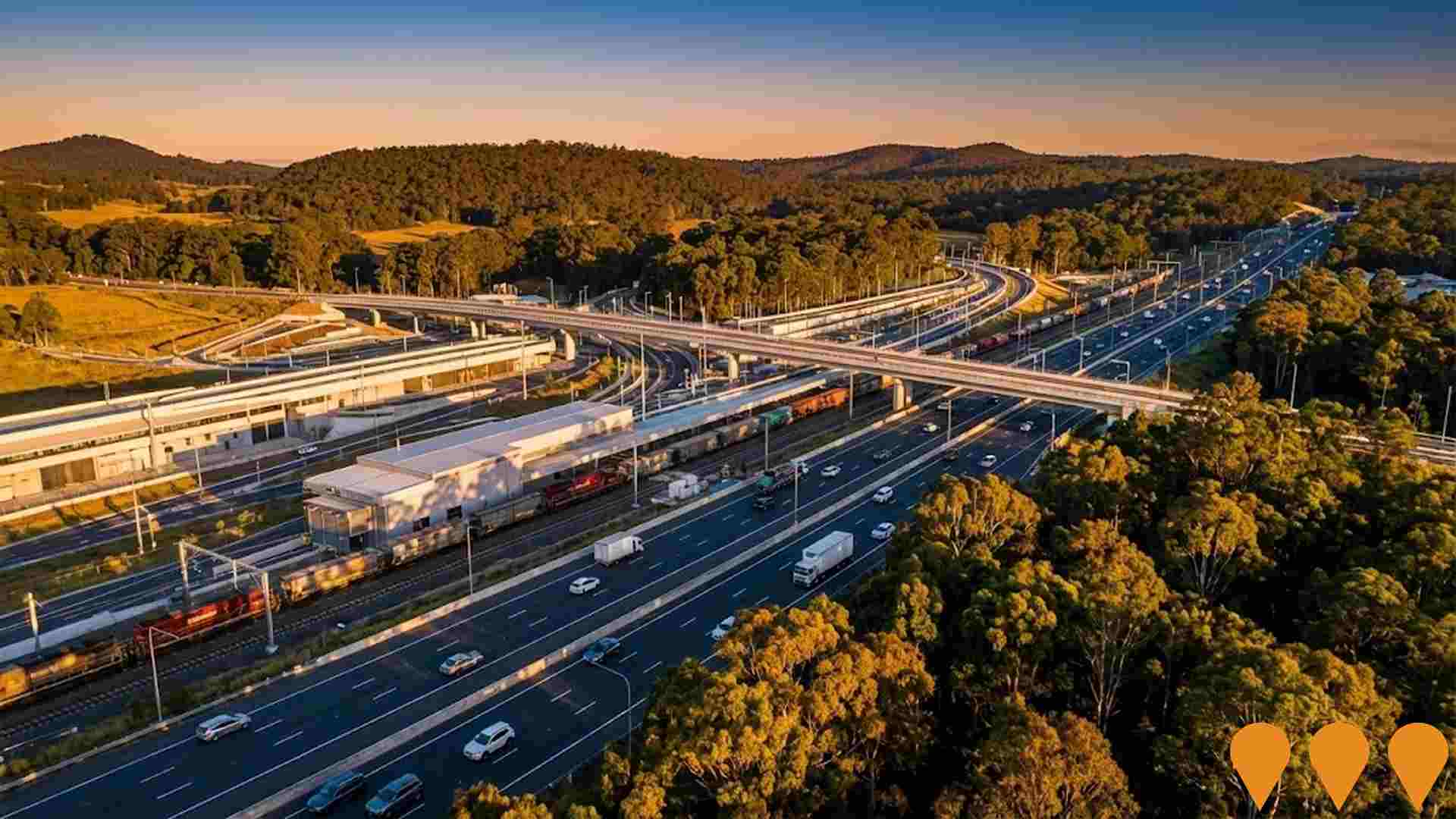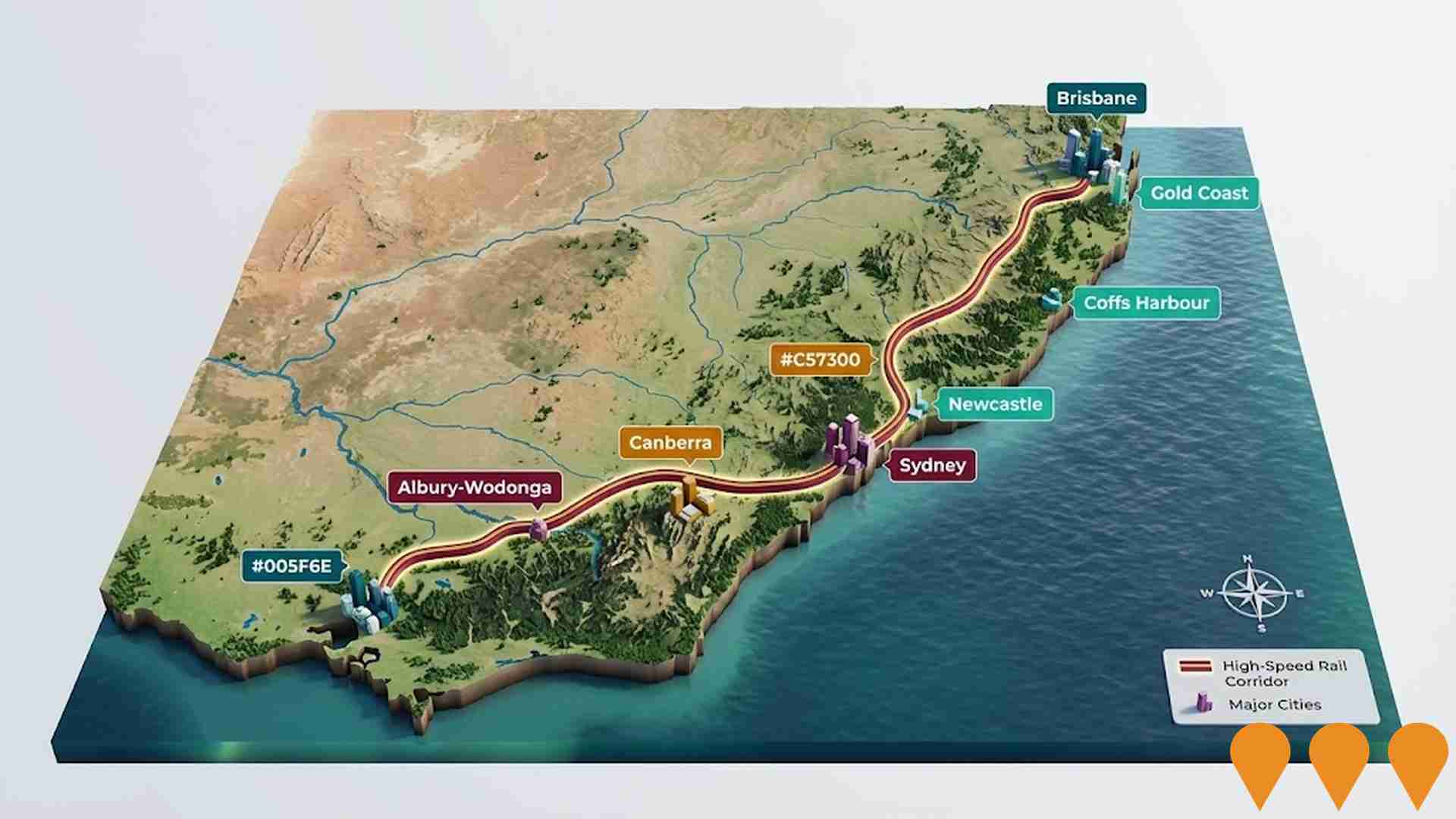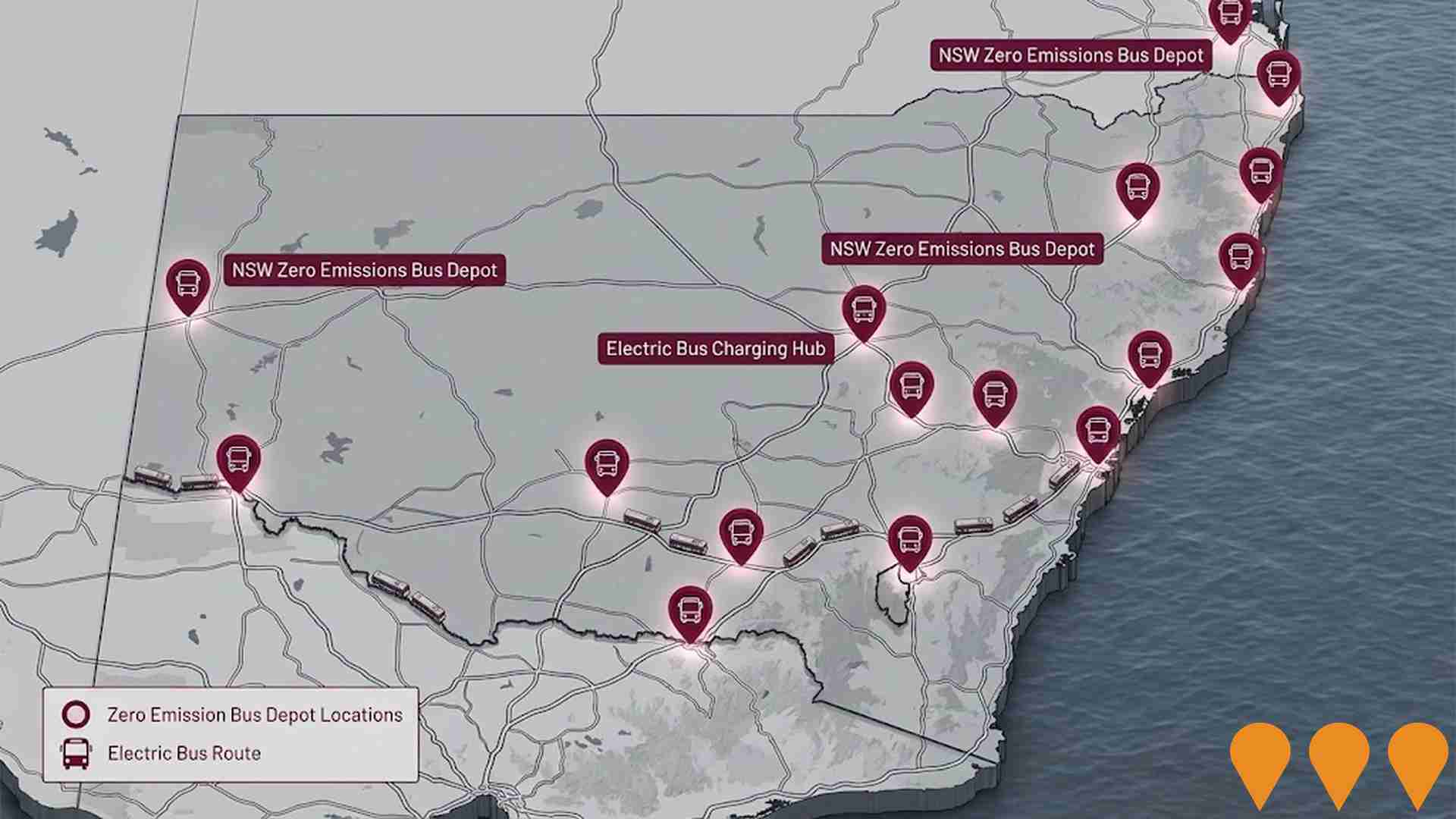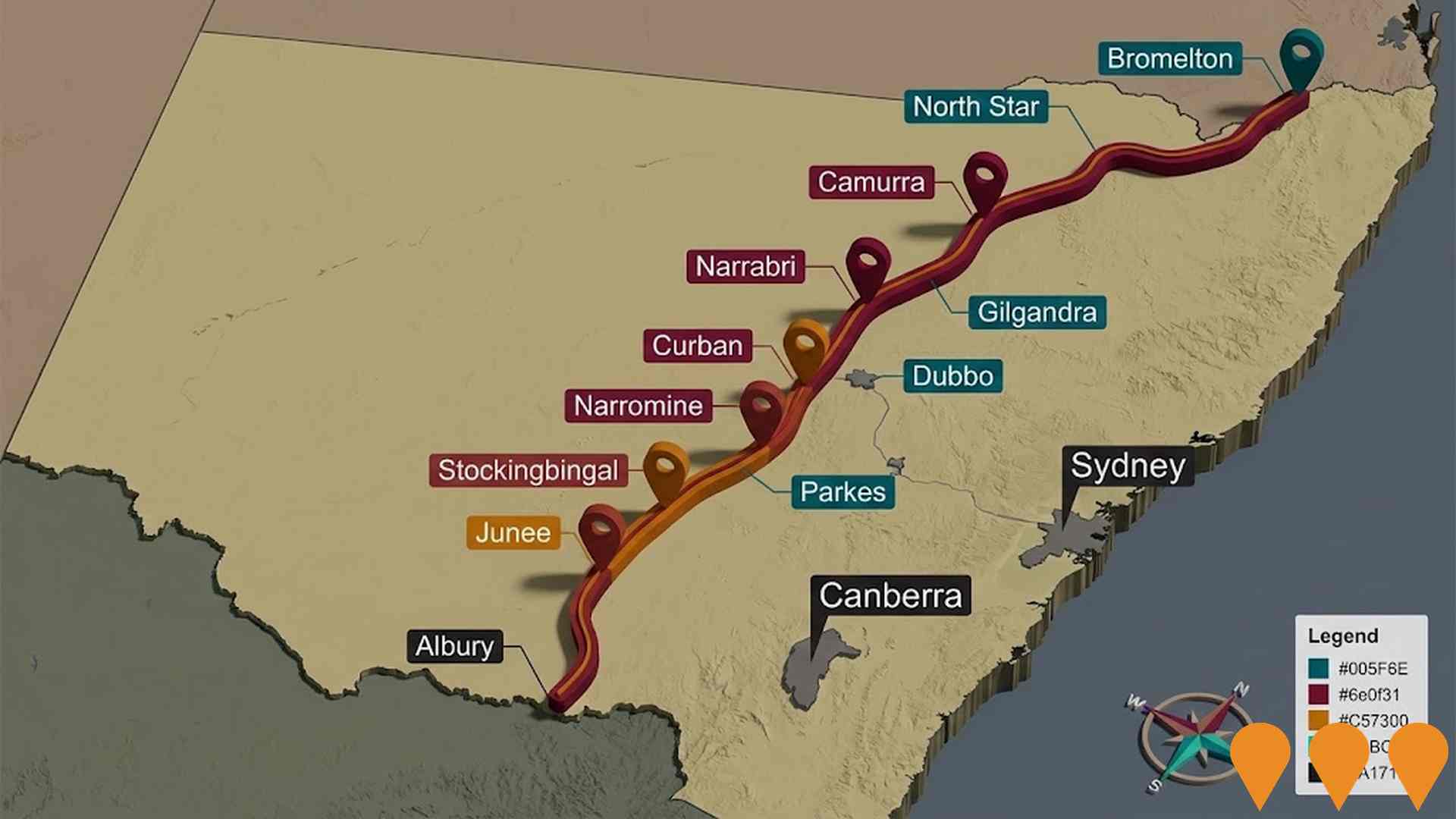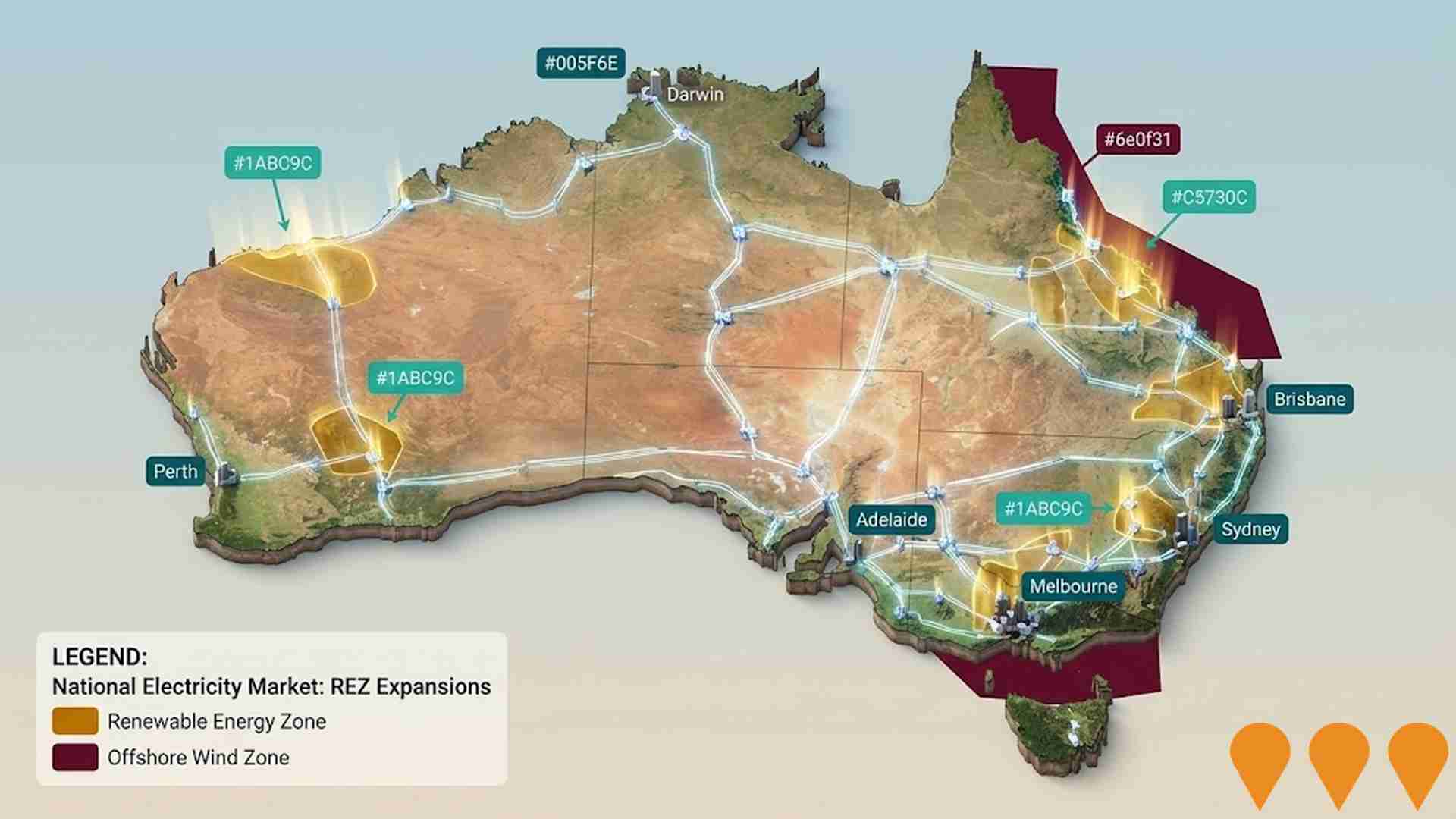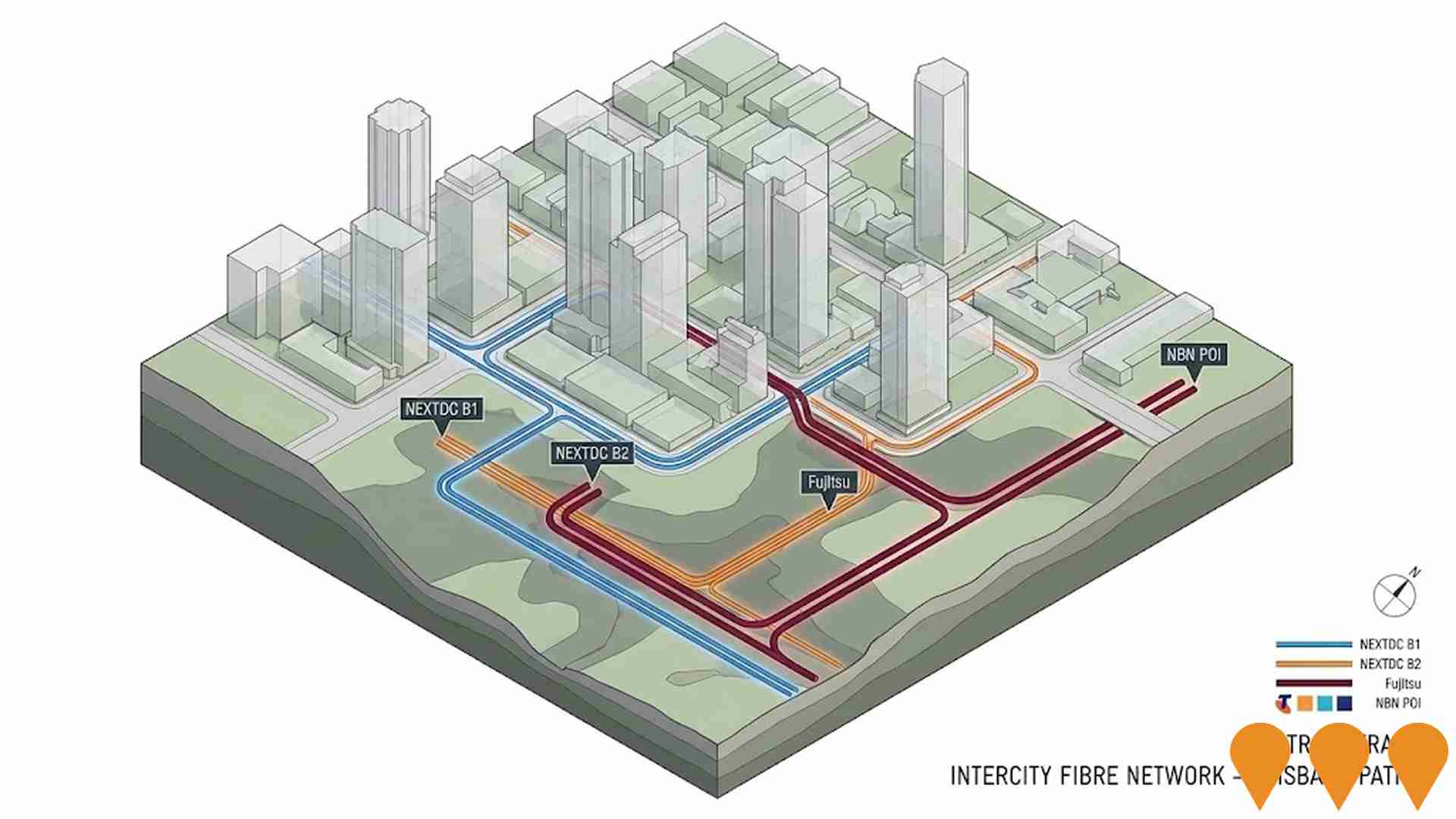Chart Color Schemes
est. as @ -- *
ABS ERP | -- people | --
2021 Census | -- people
Sales Activity
Curious about local property values? Filter the chart to assess the volume and appreciation (including resales) trends and regional comparisons, or scroll to the map below view this information at an individual property level.
Find a Recent Sale
Sales Detail
Population
An assessment of population growth drivers in Urunga reveals an overall ranking slightly below national averages considering recent, and medium term trends
Urunga's population was approximately 4,971 as of November 2025. This figure reflects an increase of 64 people since the 2021 Census, which reported a population of 4,907 people. The change is inferred from the estimated resident population of 4,944 in June 2024 and an additional 60 validated new addresses since the Census date. This level of population results in a density ratio of 45 persons per square kilometer. Urunga's growth rate of 1.3% since the census is within 2.9 percentage points of the SA3 area's growth rate of 4.2%, indicating competitive growth fundamentals. Overseas migration contributed approximately 63.8% of overall population gains during recent periods, driving primary population growth for the area.
AreaSearch adopts ABS/Geoscience Australia projections for each SA2 area, released in 2024 with a base year of 2022. For areas not covered by this data, AreaSearch utilises NSW State Government's SA2 level projections, released in 2022 with a base year of 2021. Growth rates by age group from these aggregations are applied to all areas for years 2032 to 2041. Considering projected demographic shifts, non-metropolitan areas nationally are anticipated to experience lower quartile growth. The area is expected to grow by 241 persons to 2041 based on the latest population numbers, recording a total gain of 4.3% over the 17-year period.
Frequently Asked Questions - Population
Development
Residential development activity is lower than average in Urunga according to AreaSearch's national comparison of local real estate markets
Urunga has seen approximately 11 new homes approved annually. Over the past five financial years, from FY21 to FY25, 57 homes were approved, with a further 8 approved in FY26 so far. On average, around 2.3 people have moved to the area per new home constructed over these years, indicating strong demand that supports property values.
New homes are being built at an average expected construction cost of $367,000. This financial year has seen $490,000 in commercial approvals, reflecting the area's residential nature. Compared to the rest of NSW, Urunga has about half the rate of new dwelling approvals per person, placing it among the 54th percentile nationally. However, building activity has increased recently, suggesting market maturity and potential development constraints.
All recent developments have been standalone homes, maintaining Urunga's traditional low-density character and appealing to families seeking space. Interestingly, developers are building more traditional houses than the current mix suggests (84.0% at Census), indicating continued strong demand for family homes despite density pressures. The location has approximately 290 people per dwelling approval, reflecting a low-density market. Future projections estimate Urunga will add 212 residents by 2041. With current construction levels, housing supply should meet demand adequately, creating favourable conditions for buyers and potentially enabling growth that exceeds current forecasts.
Frequently Asked Questions - Development
Infrastructure
Urunga has emerging levels of nearby infrastructure activity, ranking in the 25thth percentile nationally
Local infrastructure changes significantly influence an area's performance. AreaSearch has identified two projects that may impact this region. Notable projects include Sewering Coastal Villages Project, Urunga Boardwalk Replacement, Waterfall Way Corridor Strategy, and Pacific Highway Upgrade: Hexham To Brisbane. The following list details those most relevant.
Professional plan users can use the search below to filter and access additional projects.
INFRASTRUCTURE SEARCH
 Denotes AI-based impression for illustrative purposes only, not to be taken as definitive under any circumstances. Please follow links and conduct other investigations from the project's source for actual imagery. Developers and project owners wishing us to use original imagery please Contact Us and we will do so.
Denotes AI-based impression for illustrative purposes only, not to be taken as definitive under any circumstances. Please follow links and conduct other investigations from the project's source for actual imagery. Developers and project owners wishing us to use original imagery please Contact Us and we will do so.
Frequently Asked Questions - Infrastructure
Low and Mid-Rise Housing Policy
State-wide NSW planning reforms via amendments to the State Environmental Planning Policy to enable more diverse low and mid-rise housing (dual occupancies, terraces, townhouses, manor houses and residential flat buildings up to 6 storeys) in well-located areas within 800 m of selected train, metro and light-rail stations and town centres. Stage 1 (dual occupancies in R2 zones statewide) commenced 1 July 2024. Stage 2 (mid-rise apartments, terraces and dual occupancies near stations) commenced 28 February 2025. Expected to facilitate up to 112,000 additional homes over the next five years.
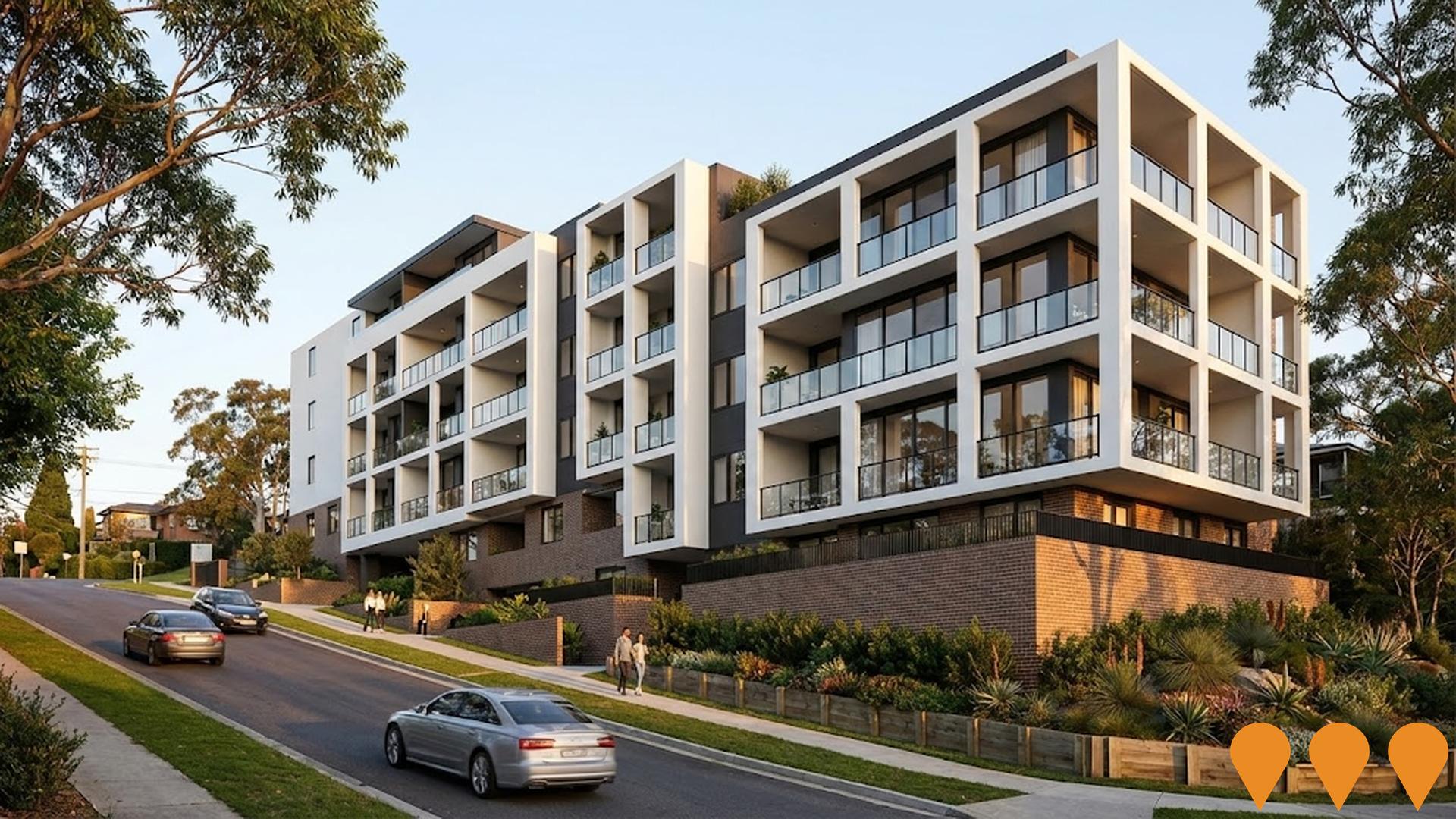
Sewering Coastal Villages Project
Multi-phase sewerage network expansion to the coastal villages of Mylestom, Repton, and parts of Raleigh to upgrade the Urunga Sewerage Treatment Plant and connect over 200 properties to a modern, low-pressure sewer system, improving environmental outcomes for the Bellinger and Kalang Rivers and supporting community growth. The project's three phases include: Urunga STP upgrade (completed September 2025), construction of sewer rising mains and pump stations (due December 2025), and installation of the low-pressure sewer reticulation network and property connections (commenced August 2025, overall completion expected October 2026).
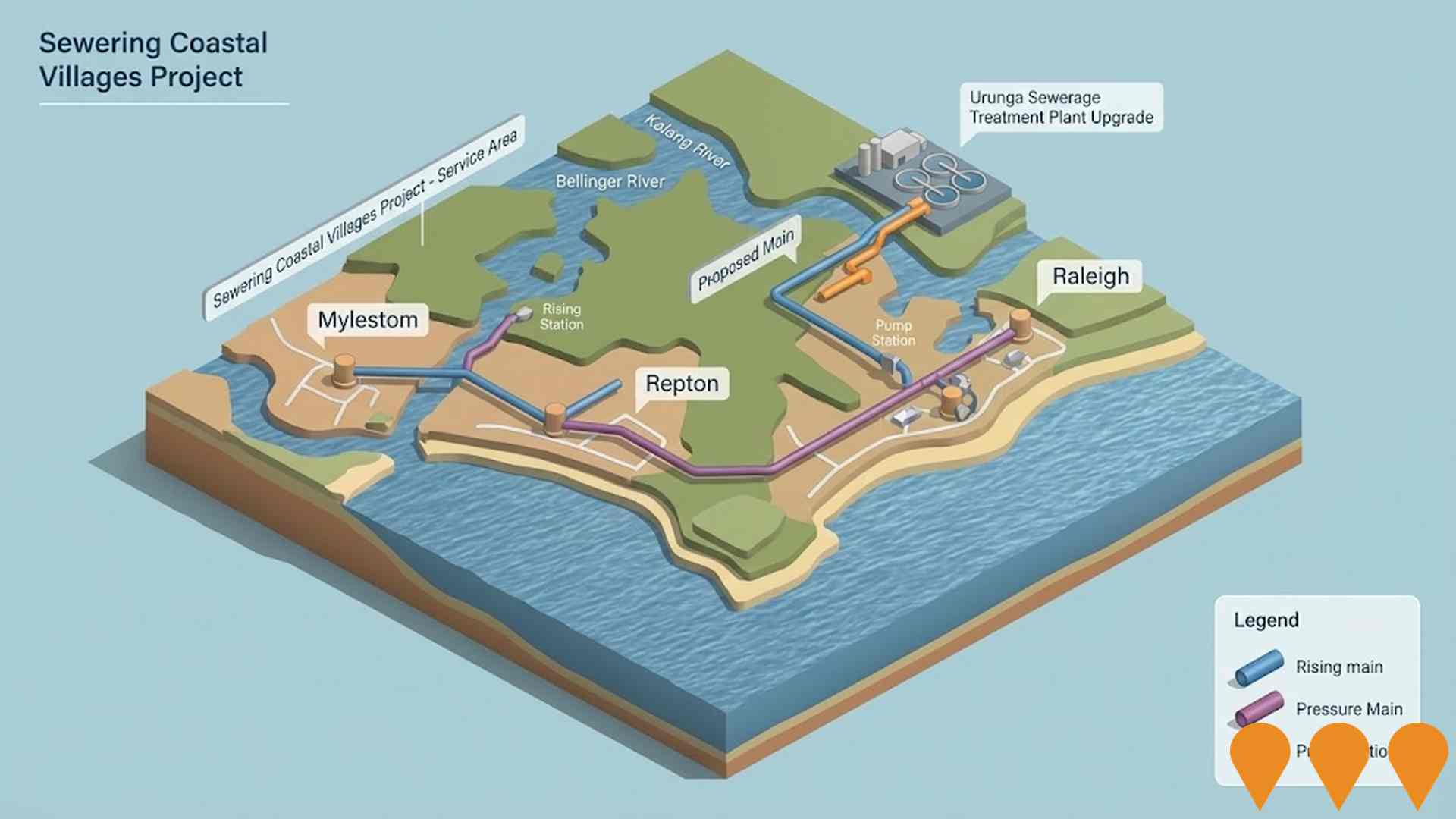
NSW Renewable Energy Zones (REZ) Program
NSW is delivering five Renewable Energy Zones (Central-West Orana, New England, South West, Hunter-Central Coast and Illawarra) to coordinate new wind and solar generation, storage and high-voltage transmission. The program is led by EnergyCo NSW under the Electricity Infrastructure Roadmap. Construction of the first REZ (Central-West Orana) transmission project commenced in June 2025, with staged energisation from 2028. Across the program, NSW targets at least 12 GW of new renewable generation and 2 GW of long-duration storage by 2030.
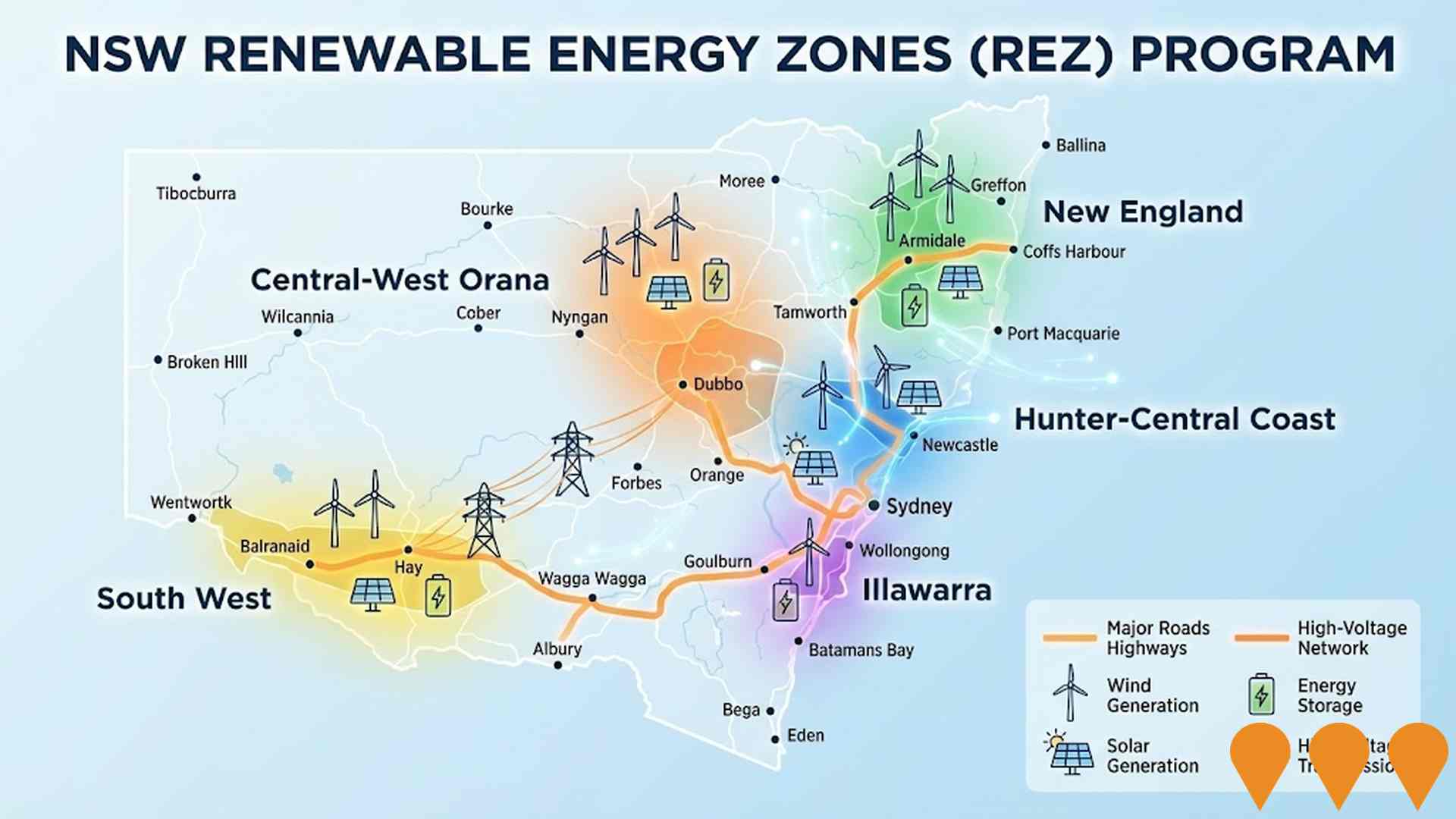
Enabling Digital Health Services for Regional and Remote Australia
National initiative to expand and improve digital health access for people in regional and remote Australia. Focus areas include enabling telehealth and virtual care, upgrading clinical systems and connectivity, supporting secure information exchange, and building workforce capability in digital health, aligned with the Australian Government's Digital Health Blueprint and Action Plan 2023-2033.
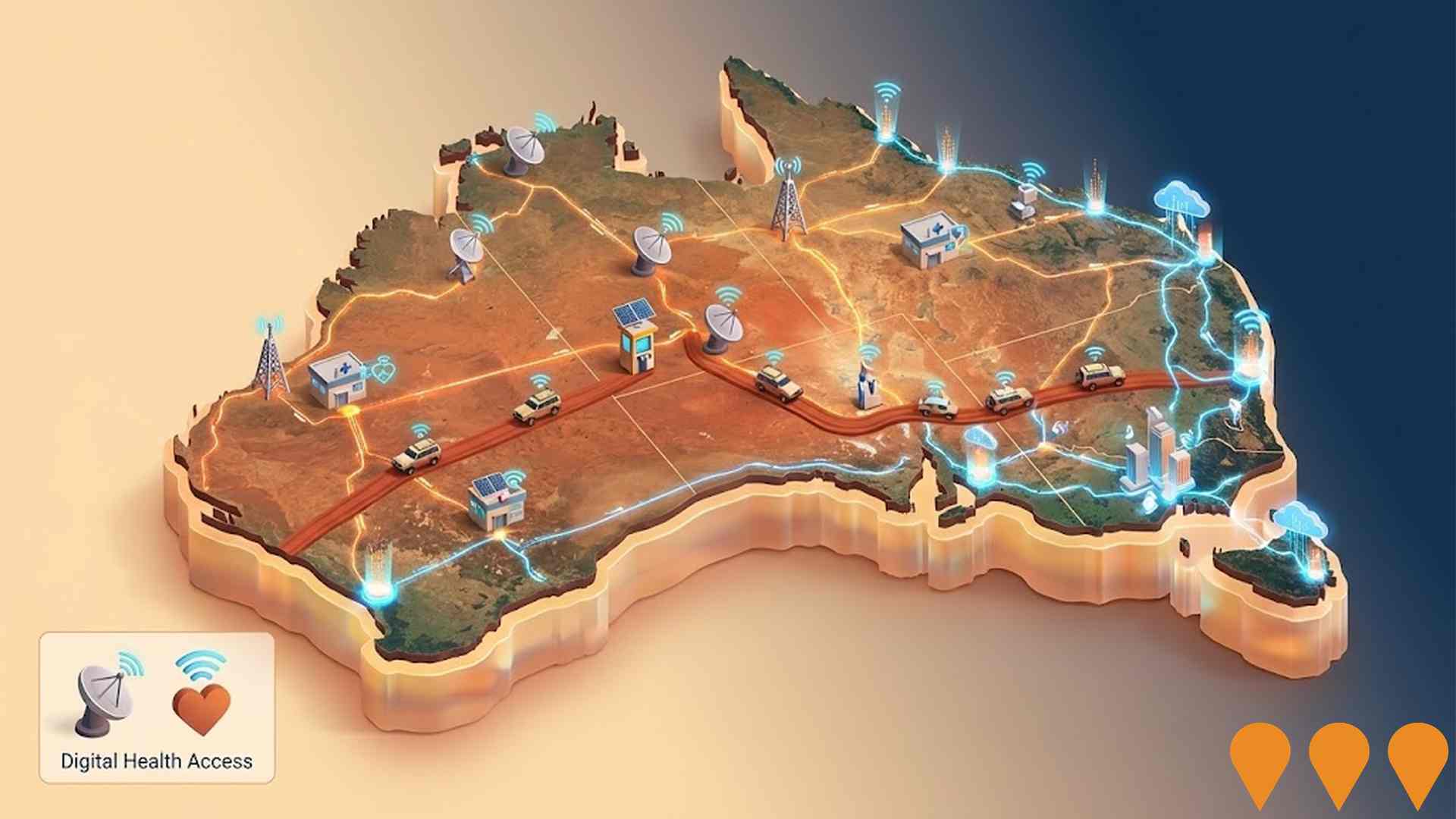
Bulk Water Supply Security
Nationwide program led by the National Water Grid Authority to improve bulk water security and reliability for non-potable and productive uses. Activities include strategic planning, science and business cases, and funding of state and territory projects such as storages, pipelines, dam upgrades, recycled water and efficiency upgrades to build drought resilience and support regional communities, industry and the environment.

Urunga Boardwalk Replacement
Major replacement of the iconic 1km Urunga Boardwalk which was damaged in the 2022 flood event, to improve resilience, access, and tourism appeal. The project is part of a broader Urunga Precinct Revitalisation. Construction commenced in June 2025 and is progressing well with piling and substructure work largely completed as of October 2025. Expected completion is in 2026.
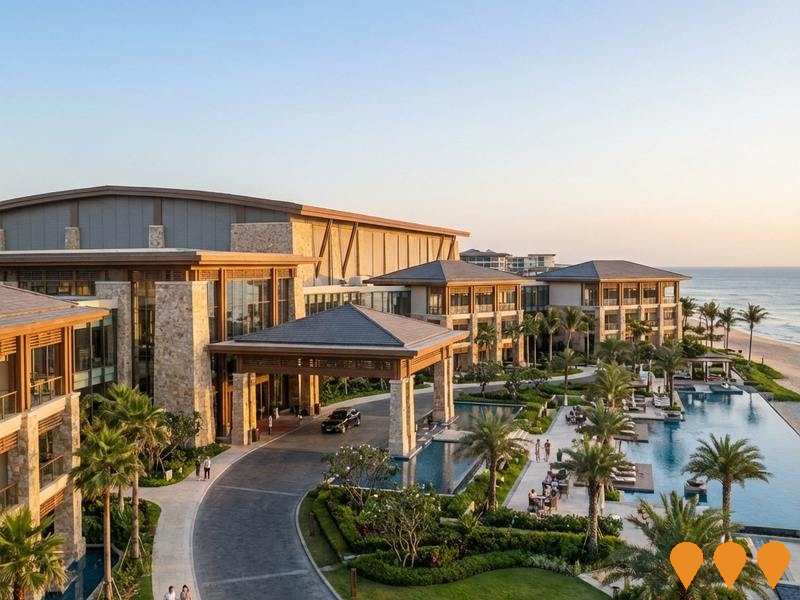
Queensland New South Wales Interconnector
The proposed Queensland New South Wales Interconnector (QNI Connect) aims to link New England's power to Queensland over approx. 600km, enhancing network capacity by up to 1,700 MW, with anticipated completion by FY2030-31.

NSW Heavy Vehicle Rest Stops Program (TfNSW)
Statewide Transport for NSW program to increase and upgrade heavy vehicle rest stopping across NSW. Works include minor upgrades under the $11.9m Heavy Vehicle Rest Stop Minor Works Program (e.g. new green reflector sites and amenity/signage improvements), early works on new and upgraded formal rest areas in regional NSW, and planning and site confirmation for a major new dedicated rest area in Western Sydney. The program aims to reduce fatigue, improve safety and productivity on key freight routes, and respond to industry feedback collected since 2022.
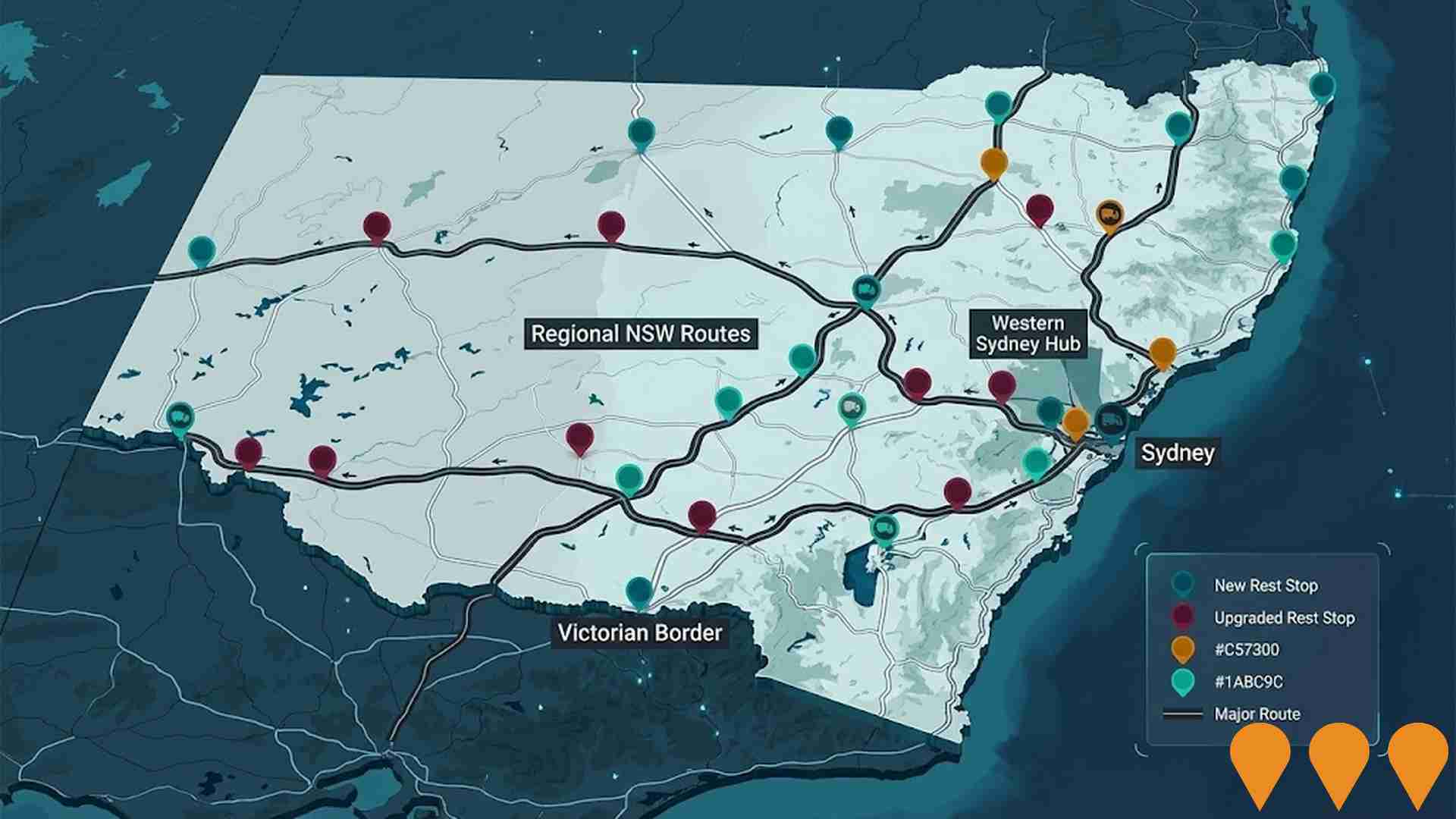
Employment
AreaSearch analysis reveals Urunga recording weaker employment conditions than most comparable areas nationwide
Urunga has a skilled workforce with well-represented essential services sectors. The unemployment rate was 4.6% in June 2025, with an estimated employment growth of 1.6% over the past year.
As of June 2025, 1,983 residents are employed while the unemployment rate is 0.9% higher than Rest of NSW's rate of 3.7%. Workforce participation in Urunga lags at 48.0%, compared to Rest of NSW's 56.4%. Key industries for employment among residents include health care & social assistance, education & training, and construction. Notably, education & training has employment levels at 1.4 times the regional average.
Conversely, agriculture, forestry & fishing employs just 3.0% of local workers, below Rest of NSW's 5.3%. The area appears to offer limited local employment opportunities, as indicated by the Census working population vs resident population count. Over the 12 months to June 2025, employment increased by 1.6%, while labour force grew by 3.4%, causing the unemployment rate to rise by 1.7 percentage points. By comparison, Rest of NSW recorded an employment decline of 0.1%, labour force growth of 0.3%, with unemployment rising by 0.4 percentage points. Jobs and Skills Australia's national employment forecasts from May 2025 offer insight into potential future demand within Urunga. These projections estimate national employment expansion at 6.6% over five years and 13.7% over ten years, with growth rates varying significantly between industry sectors. Applying these projections to Urunga's employment mix suggests local growth of approximately 6.6%% over five years and 13.8% over ten years, though this is a simple weighting extrapolation for illustrative purposes and does not account for localised population projections.
Frequently Asked Questions - Employment
Income
The area's income levels rank in the lower 15% nationally based on AreaSearch comparative data
Urunga's median taxpayer income in financial year 2022 was $43,117, with an average of $53,205. This is lower than the national average. Rest of NSW had a median income of $49,459 and an average income of $62,998 during the same period. By September 2025, estimates suggest Urunga's median income will be approximately $48,554 and average income $59,914, based on a 12.61% Wage Price Index growth since financial year 2022. According to the 2021 Census, incomes in Urunga fall between the 12th and 12th percentiles nationally for households, families, and individuals. The income bracket of $800 - 1,499 captures 27.3% of Urunga's population (1,357 individuals), contrasting with regional levels where the $1,500 - 2,999 bracket leads at 29.9%. Housing affordability pressures are severe in Urunga, with only 84.2% of income remaining after housing costs, ranking at the 13th percentile nationally.
Frequently Asked Questions - Income
Housing
Urunga is characterized by a predominantly suburban housing profile, with above-average rates of outright home ownership
Urunga's dwelling structures, as per the latest Census evaluation, consisted of 84.3% houses and 15.7% other dwellings (semi-detached, apartments, 'other' dwellings), compared to Non-Metro NSW's 84.3% houses and 21.6% other dwellings. Home ownership in Urunga stood at 49.5%, with mortgaged dwellings at 25.7% and rented ones at 24.8%. The median monthly mortgage repayment was $1,680, lower than Non-Metro NSW's average of $1,733. The median weekly rent in Urunga was $350, compared to Non-Metro NSW's $370. Nationally, Urunga's mortgage repayments were below the Australian average of $1,863, and rents were less than the national figure of $375.
Frequently Asked Questions - Housing
Household Composition
Urunga features high concentrations of group households, with a lower-than-average median household size
Family households account for 66.9 percent of all households, consisting of 20.0 percent couples with children, 33.9 percent couples without children, and 12.0 percent single parent families. Non-family households constitute the remaining 33.1 percent, with lone person households at 29.4 percent and group households comprising 4.0 percent of the total. The median household size is 2.3 people, which is smaller than the Rest of NSW average of 2.4.
Frequently Asked Questions - Households
Local Schools & Education
Educational attainment in Urunga aligns closely with national averages, showing typical qualification patterns and performance metrics
The area faces educational challenges, with university qualification rates at 21.3%, significantly lower than the NSW average of 32.2%. This presents both a challenge and an opportunity for targeted educational initiatives. Bachelor degrees are the most common at 14.9%, followed by postgraduate qualifications (3.5%) and graduate diplomas (2.9%). Trade and technical skills are prominent, with 41.7% of residents aged 15+ holding vocational credentials - advanced diplomas (10.3%) and certificates (31.4%).
A substantial 24.9% of the population is actively pursuing formal education, including 9.5% in primary, 6.9% in secondary, and 2.6% in tertiary education. Urunga's three schools have a combined enrollment of 282 students, operating under typical Australian school conditions (ICSEA: 1017) with balanced educational opportunities. The three schools focus exclusively on primary education, with secondary options available in surrounding areas due to limited local school capacity (5.7 places per 100 residents compared to the regional average of 15.6). Consequently, many families travel to nearby areas for schooling.
Frequently Asked Questions - Education
Schools Detail
Nearby Services & Amenities
Transport
Transport servicing is moderate compared to other areas nationally based on assessment of service frequency, route connectivity and accessibility
Urunga has 76 active public transport stops, offering a mix of train and bus services. These stops are served by 43 different routes, collectively providing 594 weekly passenger trips. The average distance from residents to the nearest stop is 228 meters.
On average, there are 84 trips per day across all routes, which equates to approximately 7 weekly trips per individual stop.
Frequently Asked Questions - Transport
Transport Stops Detail
Health
Health performance in Urunga is well below average with prevalence of common health conditions notable across both younger and older age cohorts
Urunga faces significant health challenges, with common conditions prevalent among both younger and older age groups. Private health cover is low at approximately 47%, covering around 2,321 people, compared to the national average of 55.3%.
The most common conditions are arthritis (affecting 11.6% of residents) and mental health issues (9.4%). Approximately 60.6% report no medical ailments, compared to 63.9% in the rest of NSW. The area has a higher proportion of residents aged 65 and over at 32.5%, with around 1,616 people falling into this age group, compared to 23.9% in the rest of NSW.
Frequently Asked Questions - Health
Cultural Diversity
Urunga is considerably less culturally diverse than average when assessed alongside AreaSearch's national rankings for language and cultural background related metrics
Urunga's cultural diversity was found to be below average, with 91.0% of its population being citizens and 89.5% born in Australia. A majority, 97.1%, spoke English only at home. Christianity was the predominant religion, accounting for 50.0% of Urunga's population compared to 47.5% across the Rest of NSW.
The top three ancestry groups were English (32.9%), Australian (30.8%), and Irish (10.4%). Notably, Scottish ancestry was overrepresented at 9.4%, while Australian Aboriginal was underrepresented at 3.3%. French ancestry remained consistent with regional levels at 0.5%.
Frequently Asked Questions - Diversity
Age
Urunga ranks among the oldest 10% of areas nationwide
Urunga's median age is 53, which is considerably higher than the Rest of NSW figure of 43 and substantially exceeds the national norm of 38. Relative to Rest of NSW, Urunga has a higher concentration of 65-74 residents at 19.0%, but fewer 25-34 year-olds at 6.5%. This 65-74 concentration is well above the national figure of 9.4%. Between the 2021 Census and present, the 35 to 44 age group has grown from 8.9% to 11.1%, while the 65 to 74 cohort increased from 17.8% to 19.0%. Conversely, the 45 to 54 cohort declined from 12.8% to 10.8%, and the 25 to 34 group dropped from 8.1% to 6.5%. Looking ahead to 2041, demographic projections reveal significant shifts in Urunga's age structure. Leading this shift, the 75 to 84 group is projected to grow by 28%, reaching 625 from 487. The aging population trend is clear, with those aged 65 and above comprising 64% of projected growth. Conversely, both the 45 to 54 and 65 to 74 age groups are projected to have reduced numbers.

